Gijs Bellaard
Universal Collection of Euclidean Invariants between Pairs of Position-Orientations
Apr 04, 2025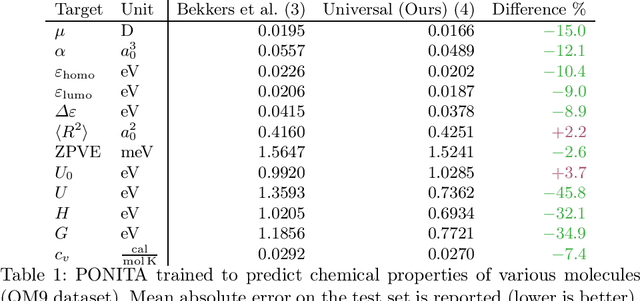
Abstract:Euclidean E(3) equivariant neural networks that employ scalar fields on position-orientation space M(3) have been effectively applied to tasks such as predicting molecular dynamics and properties. To perform equivariant convolutional-like operations in these architectures one needs Euclidean invariant kernels on M(3) x M(3). In practice, a handcrafted collection of invariants is selected, and this collection is then fed into multilayer perceptrons to parametrize the kernels. We rigorously describe an optimal collection of 4 smooth scalar invariants on the whole of M(3) x M(3). With optimal we mean that the collection is independent and universal, meaning that all invariants are pertinent, and any invariant kernel is a function of them. We evaluate two collections of invariants, one universal and one not, using the PONITA neural network architecture. Our experiments show that using a collection of invariants that is universal positively impacts the accuracy of PONITA significantly.
Roto-Translation Invariant Metrics on Position-Orientation Space
Apr 04, 2025Abstract:Riemannian metrics on the position-orientation space M(3) that are roto-translation group SE(3) invariant play a key role in image analysis tasks like enhancement, denoising, and segmentation. These metrics enable roto-translation equivariant algorithms, with the associated Riemannian distance often used in implementation. However, computing the Riemannian distance is costly, which makes it unsuitable in situations where constant recomputation is needed. We propose the mav (minimal angular velocity) distance, defined as the Riemannian length of a geometrically meaningful curve, as a practical alternative. We see an application of the mav distance in geometric deep learning. Namely, neural networks architectures such as PONITA, relies on geometric invariants to create their roto-translation equivariant model. The mav distance offers a trainable invariant, with the parameters that determine the Riemannian metric acting as learnable weights. In this paper we: 1) classify and parametrize all SE(3) invariant metrics on M(3), 2) describes how to efficiently calculate the mav distance, and 3) investigate if including the mav distance within PONITA can positively impact its accuracy in predicting molecular properties.
PDE-CNNs: Axiomatic Derivations and Applications
Mar 22, 2024Abstract:PDE-based Group Convolutional Neural Networks (PDE-G-CNNs) utilize solvers of geometrically meaningful evolution PDEs as substitutes for the conventional components in G-CNNs. PDE-G-CNNs offer several key benefits all at once: fewer parameters, inherent equivariance, better performance, data efficiency, and geometric interpretability. In this article we focus on Euclidean equivariant PDE-G-CNNs where the feature maps are two dimensional throughout. We call this variant of the framework a PDE-CNN. We list several practically desirable axioms and derive from these which PDEs should be used in a PDE-CNN. Here our approach to geometric learning via PDEs is inspired by the axioms of classical linear and morphological scale-space theory, which we generalize by introducing semifield-valued signals. Furthermore, we experimentally confirm for small networks that PDE-CNNs offer fewer parameters, better performance, and data efficiency in comparison to CNNs. We also investigate what effect the use of different semifields has on the performance of the models.
Optimal Transport on the Lie Group of Roto-translations
Mar 05, 2024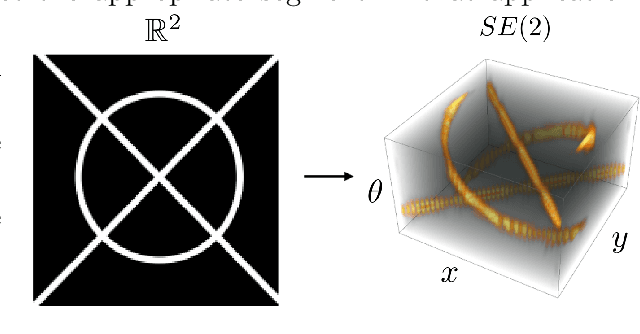
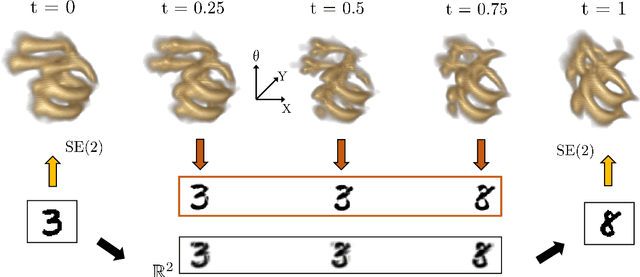
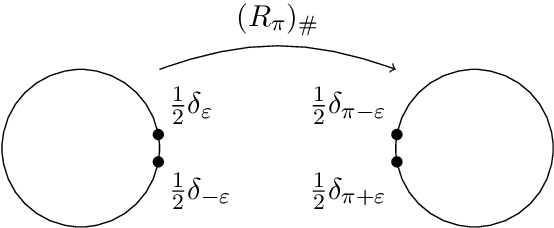

Abstract:The roto-translation group SE2 has been of active interest in image analysis due to methods that lift the image data to multi-orientation representations defined on this Lie group. This has led to impactful applications of crossing-preserving flows for image de-noising, geodesic tracking, and roto-translation equivariant deep learning. In this paper, we develop a computational framework for optimal transportation over Lie groups, with a special focus on SE2. We make several theoretical contributions (generalizable to matrix Lie groups) such as the non-optimality of group actions as transport maps, invariance and equivariance of optimal transport, and the quality of the entropic-regularized optimal transport plan using geodesic distance approximations. We develop a Sinkhorn like algorithm that can be efficiently implemented using fast and accurate distance approximations of the Lie group and GPU-friendly group convolutions. We report valuable advancements in the experiments on 1) image barycentric interpolation, 2) interpolation of planar orientation fields, and 3) Wasserstein gradient flows on SE2. We observe that our framework of lifting images to SE2 and optimal transport with left-invariant anisotropic metrics leads to equivariant transport along dominant contours and salient line structures in the image. This yields sharper and more meaningful interpolations compared to their counterparts on R^2
Analysis of (sub-)Riemannian PDE-G-CNNs
Oct 03, 2022
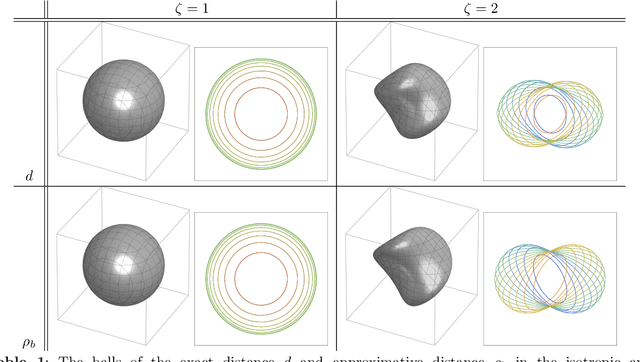

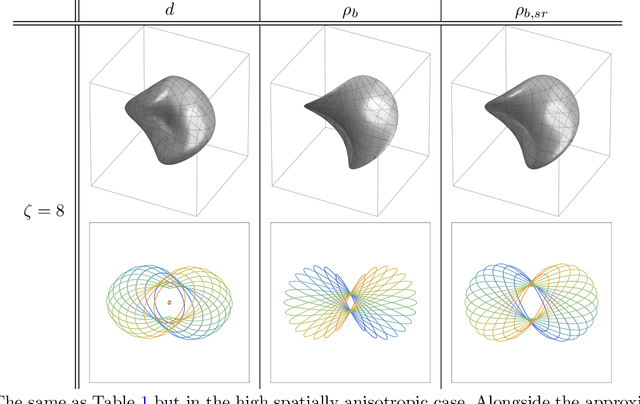
Abstract:Group equivariant convolutional neural networks (G-CNNs) have been successfully applied in geometric deep-learning. Typically, G-CNNs have the advantage over CNNs that they do not waste network capacity on training symmetries that should have been hard-coded in the network. The recently introduced framework of PDE-based G-CNNs (PDE-G-CNNs) generalize G-CNNs. PDE-G-CNNs have the core advantages that they simultaneously 1) reduce network complexity, 2) increase classification performance, 3) provide geometric network interpretability. Their implementations solely consist of linear and morphological convolutions with kernels. In this paper we show that the previously suggested approximative morphological kernels do not always approximate the exact kernels accurately. More specifically, depending on the spatial anisotropy of the Riemannian metric, we argue that one must resort to sub-Riemannian approximations. We solve this problem by providing a new approximative kernel that works regardless of the anisotropy. We provide new theorems with better error estimates of the approximative kernels, and prove that they all carry the same reflectional symmetries as the exact ones. We test the effectiveness of multiple approximative kernels within the PDE-G-CNN framework on two datasets, and observe an improvement with the new approximative kernel. We report that the PDE-G-CNNs again allow for a considerable reduction of network complexity while having a comparable or better performance than G-CNNs and CNNs on the two datasets. Moreover, PDE-G-CNNs have the advantage of better geometric interpretability over G-CNNs, as the morphological kernels are related to association fields from neurogeometry.
 Add to Chrome
Add to Chrome Add to Firefox
Add to Firefox Add to Edge
Add to Edge